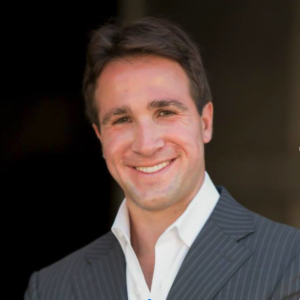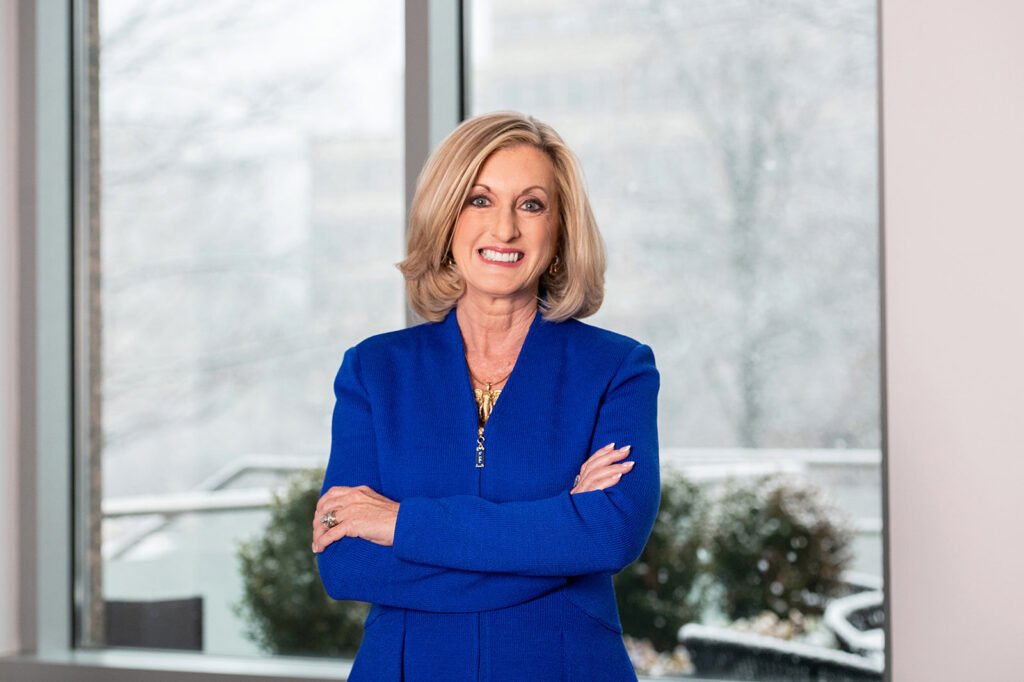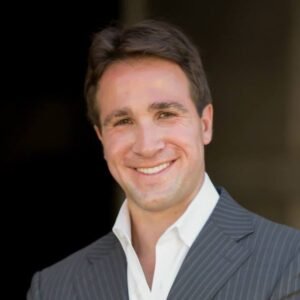I recently went one on one with Ambassador Lisa Gable. Lisa served for four U.S. presidents and two governors and is currently the CEO of the leading food allergy nonprofit FARE.
Adam: Thanks again for taking the time to share your advice. First things first, though, I am sure readers would love to learn more about you. How did you get here?
Lisa: Throughout my career I have served four U.S. presidents and two governors, counseled Fortune 500 CEOs, and represented global public-private partnerships and non-profits. My end goal was to move each organization to a higher level of performance.
I had opportunities to learn from Ronald Reagan from whom I learned to focus on outcomes, not on who receives the credit. From Indra Nooyi, I learned to demand unity of purpose. From former Air Force Secretary Barbara Barrett, I learned to replace myself with another woman when exiting a high level position.
A common thread among the positions I’ve held is that I have been called upon to manage turnarounds and solve seemingly intractable problems—whether they be businesses, teams, nonprofits, political campaigns or government projects. In my view, the word “turnaround” doesn’t necessarily connote negativity because I’ve seen astounding end results. Whether you need to up-level a struggling team, respond to new market forces, navigate a crisis, or lead a wholesale leadership change, the biggest challenge is to recognize and act upon it.
Over the years, I have become a specialist in managing complexities, with discipline and an extra dash of diplomacy. I am typically brought in when people have attempted a variety of tactics, but the economics of the business don’t work within the current model in which the organization is operating. That is one reason why in 2018, I was brought on as CEO of FARE, which was about to embark on a major restructuring to better support the next phase of growth in the food allergy space.
What experiences, failures, setbacks or challenges have been most instrumental to your growth?
Lisa: In 2004, I was asked to serve as the U.S. Ambassador and Commissioner General to the 2005 Aichi World EXPO (World’s Fair). Due to 1998 Congressional action, this was to be the first 100% privately funded engagement by the U.S. in a World’s Fair. As Erik Larson described in his history of the Chicago World’s Fair, The Devil in a White City, the byzantine and bureaucratic rules governing World’s Fairs had made the Commissioner General’s job notoriously difficult. It also created an environment that encouraged overspending and cutting corners. Knowledgeable about the Fair’s checkered history, Democrat power lawyer, Bob Barnett gave me a piece of sage advice: “Every day a witch is burned in Washington, and you do not want to be the witch. It was advice I took seriously, as I reviewed the indictment of one of my predecessors and dove into Inspector General reports and financial files detailing previous US engagement.
With Barnett’s words in mind, I set out to run the U.S. Pavilion in Aichi, Japan, quite differently. I focused on streamlining the process, in terms of money and time, making it as efficient as possible. Ultimately, we were recognized on the floor of the Senate for delivering our pavilion on time, under budget, and free of legal questions. The experience taught me that there is no margin for error when operating in the public eye. I also learned four critical steps all leaders must take to avoid being burned at the stake.
First, do your research and dig into the files no one else wants to read. Ask the hard questions and find out what exactly went wrong in the past to avoid making the same mistakes.
Second, the best way to avoid trouble is to act with the assumption that your smallest mistakes will be exposed.
Third, always consider if the action you’re taking passes the “sniff test.” Sometimes what you are doing may be technically legal but might feel wrong or even immoral to a suspicious public.
Fourth, give your critics a heads up before a major action. I made quarterly, full disclosure reports to Congress and to government peers.
The common thread running through all these steps is a commitment to transparency. Being open about the decisions you make and why you make them ensures it far more difficult for anyone to later attempt to speculate about your actions or motives. My dad always told me, in every action you take you should always prepare yourself for inspection and inquiry, just don’t hand someone the ammunition to shoot you!
Adam: In your experience, what are the key steps to turning an organization around?
Lisa: Hyper competition coupled with a global pandemic has made survival more challenging than ever. I outline four key steps in my upcoming book, Turnaround (to be released Fall 2021) to guide companies as they emerge from the economic constraints experienced during Covid-19:
You need to visualize the future. Stop thinking about the problem and focus on where you want to end.
Break down the present—ditch what isn’t working; keep what does.
Create a path to your future—map out critical decisions and actions needed.
Execute with confidence and diplomacy—speed up by partnering well with other.
Adam: What are your best tips for leaders faced with turnaround situations?
Lisa: When I work with clients or new organizations, I ask them that if they could wave their magic wand what would they want to see. The perfect world scenario is typically one that leverages and maximizes a “core competency” that your project or organization is uniquely qualified in and drives your position of strength. With your core competency in mind, you can visualize a fresh future for your organization, project or program. This new perfect world scenario might be one where you leverage your competency to mitigate the growth of a rising risk that has a negative impact on your customer base, constituency or community. It may also allow you to solve a problem that threatens your position in the market, and it may be a breakthrough technology that will transform people’s lives or the way they live or work.
To visualize the future, it often helps to focus on your customers’ or constituents’ pain points. So often, in an effort to build something great, we fail to truly appreciate what they want and need—and therefore what will lead to our success. Within the health world, we call this the Voice of the Patient, which is the articulation of the burden of the disease and representing that burden to regulators and drug developers who work together to find solutions that meet the patients’ needs.
Once you’ve visualized this new perfect world scenario, describe what it would look like in three or five years (or whatever timeframe the scope of your turnaround demands and allows). Analyze the level of investment that will be needed to get there. Is it achievable with the current business model or design of your organization or project? Will it require a major redesign?
Your journey to delivering your perfect world scenario is only possible if you focus everyone on your team or in our case, the donors, on a clearly articulated and easily understood objective. As I learned early in my career, you can’t do it alone. And, in a turnaround, you only have a limited number of plays in which you can invest time and resources heavily to execute your perfect world scenario.
Expanding and creating even greater differentiation within our core competency, research, was fundamental to the growth of FARE when I became CEO. As we executed an 83 percent restructure, we kept the Voice of the Patient at the center of every business decision made with a goal of mitigating risk, improving standards of care for all patients, and building a process to drive the discovery of therapies and diagnostics.
As the only patient advocacy group in the food allergy space with a multi-dimensional medical research capability, we created a value proposition that was unique in the market and necessary to mitigate risk for the patient. In 2015, FARE had launched the FARE Clinical Network. This was our starting point for growth, fueled by our ability to evolve and grow our capabilities to support clinical trials. By reducing costs associated with drug development, we would increase investment as we decreased our position in other costly labor-intensive efforts.
The network initially included 22 centers of excellence in 15 states and the District of Columbia and, between 2015 and 2019, it grew to include 33 food allergy centers, with participating institutions located in 19 states and Washington, D.C. To date, the network sites have participated in more than 45 clinical trials in food allergy including those that led to the development and market release the first-ever FDA-approved treatment for peanut allergy in January 2020.
With the expansion of the FARE Clinical Network to 50 sites today, we are one step closer to more treatment options for the 32 million Americans living with potentially life-threatening allergies and are better positioned to one day find a cure.
With that goal in mind, we raised $85M in the first two years of the FARE to restructure against a $200M five-year goal and in 2020 expanded the network to 50 participating institutions. By increasing the locations available for multi-site clinical trials, the network is able to facilitate the development of new therapies, diagnostics and prevention strategies and will make access to experimental treatments possible for volunteers drawn from a larger and more diverse patient population.
We took our core competency and enhanced it strategically creating three types of centers that draw on the individual strengths of each participating institution:
Discovery Centers of Distinction – conducts novel research on treatments, diagnostics, prevention, and improvements to care,
Clinical Research Centers of Distinction – with expertise in leading clinical research investigates new ways to prevent, diagnose and treat food allergy, and
Clinical Care Centers of Distinction provides exceptional patient care and community education while generating real-world data through daily clinical care.
In addition to having an infrastructure to support research, we recognized the importance of data to streamline the regulatory process through improved decision-making. Data is the “regulatory circuit breaker.” To build the required data, FARE selected the Cincinnati Children’s Hospital Medical Center to house the FARE Clinical Network Biobank and Biomarker Discovery Center. As home to the largest pediatric biorepository in the world, Cincinnati Children’s brings exceptional experience in the acquisition, processing, storage and distribution of biospecimens for health research. FARE Clinical Network investigators can leverage this outstanding resource into their clinical research pursuits.
FARE has also selected the Children’s Hospital of Philadelphia (CHOP) as the FARE Clinical Network Data Coordination Center, which will support the design, development, execution, monitoring and analysis of clinical research studies, including clinical trials to evaluate promising therapeutics and approaches for food allergy treatment and prevention. Data Coordination Center services will assist research teams at the FARE Clinical Network sites with protocol development, FDA submissions and safety oversight for studies within the Network.
With the FCN expansion, we have the access to more patients. We use that access to grow the FARE Patient Registry, Data Coordination Center and Biobank which will have the most comprehensive patient datasets. We have an actively engaged community and have room to grow in reaching the 85M Americans affected by food allergies and intolerances, and the broader half-billion food allergy patients globally. We have respected relationships with the government and companies as we support them with a quantifiable results. Our digital engagement is growing by leaps and bounds. Now is the time to constantly generate more data at every touchpoint. We have the strongest portfolio ever with new products on the way. The pipeline is full of great innovation on both the product and services side. We are fortunate to have loyal customers who trust FARE. As we focus on research as our core competency, we are in the strongest position ever to have our growth accelerate finding a cure.
Adam: What do you believe are the defining qualities of an effective leader?
Lisa: Diligence, humor, humility, and determination combined with grace, grit, and gladness for the opportunity to make a positive difference in people’s lives.
Adam: How can leaders and aspiring leaders take their leadership skills to the next level?
Lisa: I’ve learned that leadership requires a commitment to align resources with the goals and objectives of others; partnerships with organizations that have direct connection to the people who face the problems you are trying to solve; careful stewardship of funds so the majority of dollars go to critical deliverables; and identification of metrics that determine success.
Adam: What are your three best tips applicable to entrepreneurs, executives and civic leaders?
Lisa:
Get a good partner. A team made up of two wicked smart people accelerates innovation.
Admit when you don’t know something. Ask for help, assess the facts, make a decision, and move on quickly.
Understand and appreciate the diversity of your customer base. Have deeper conversations with real people – your Uber driver, a small shop owner. Understand them and their needs.
Adam: What is your best advice on building, leading and managing teams?
Lisa: Proactively help others succeed. Your personal team will grow stronger if you empower your team and look for opportunities to help people up the ladder.
Adam: What is the single best piece of advice you have ever received?
Lisa: Check your ego at the door and remember that we are custodians acting on behalf of the institutions, the moms and dads, and the constituents we represent. We are only temporary players in the long game.









